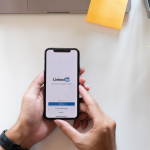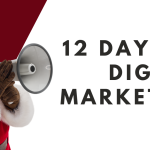The biggest asset of social media is that it allows your brand to have almost-instantaneous connections with your audience. While all platforms allow this, they are not all created equal and favor different kinds of brands.
Your Facebook and LinkedIn strategies, for example, should not be interchangeable. The two platforms have different uses, so your strategies should have different goals.
Building your social media audience will depend on you knowing which platform best aligns with your targeted demographics. To help, the best social media platforms for engagement, and which kinds of brands should use them, are outlined below.
Facebook: Facebook is your best bet for a community and eCommerce combo. Facebook audiences tend to be simple social media users (they skew much older than the other platforms on this list) but that does make them more likely to be brand loyal. However, the amount of engagement you get on Facebook depends almost entirely on how much money you put into advertising efforts like digital ads or boosted posts.
If your demographics skew older or your social media strategy is heavily ad-based, Facebook is the best option for you.
Twitter: If you’re looking to have naturalistic back-and-forths with your audience and can master the art of the meme, Twitter is the place to be. Unlike Facebook, where aesthetics and impeccable branding are important for garnering interaction, on Twitter your brand has the freedom to be more casual and engage with users on a more human level. Or, you can take a page from Wendy’s playbook by tweeting whatever you think is funny and seeing how well it sticks. Getting your goofy, non-sequitur tweets RT’d by larger accounts is one of the fastest ways your account can grow. Beware, though, that the retweet format makes it easy for audiences to take your posts out of context.
If your brand is socially aware or current-events based, Twitter is the right option for you.
LinkedIn: If you’re a business owner, especially one whose business relies on referrals, you need to be building an audience on LinkedIn. A lot of people don’t like LinkedIn’s DMs, which is understandable, they do have a reputation for being spammy. Luckily, growing your audience can be done entirely through your feed. LinkedIn, more than any other social media platform, respects thought leadership. If you have something unique to say about your industry (or even better, a niche within your industry) it’s easy to grow your connections quickly and build a reliable audience around your personal brand. Remember, though, that the real audience-building effort starts in the comments section. Never ignore your post notifications.
If you’re establishing yourself as a brand and need to make professional connections as well as build your reputation, LinkedIn is the choice for you.
TikTok: Unlike Instagram or YouTube, being successful on TikTok does not mean your videos need to have high production value. You just need to be engaging and know what the TikTok algorithm is favoring at any given moment. Community-building on TikTok requires very little comment effort from you at all. It’s not really expected that brand accounts engage in conversation, and the TikTok comments section isn’t really built for it anyway. As long as your videos are performing solidly, your community will build itself.
If your demographics trend younger or you have a skilled video content creator on your team, TikTok is the platform for you.
Now, what if your brand doesn’t fit into one of these categories? There’s nothing wrong with that—all it means is that your goals aren’t engagement-based. If you care about brand image and sales over audience-building, you’re more of a fit for Instagram.
Social media channels are not interchangeable and arbitrary. To maximize your audience engagement, you need to set up your digital presence to meet your audience where they’re at.











